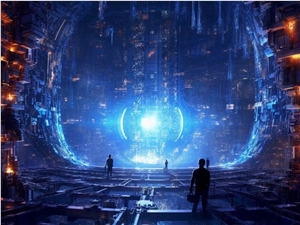In the field of digital image processing, an innovative technology named DiPIR (Diffusion-Guided Inverse Rendering) is garnering significant attention. This latest method proposed by researchers aims to address the longstanding technical challenge of seamlessly inserting virtual objects into real scenes.
The core of DiPIR lies in its unique working principle. It combines large-scale diffusion models with physics-based inverse rendering processes to accurately recover scene lighting information from a single image. This groundbreaking method not only allows for the insertion of any virtual object into an image but also automatically adjusts the object's material and lighting to blend naturally with the surrounding environment.

The workflow of this technology begins by constructing a virtual 3D scene based on the input image, then utilizes a differentiable renderer to simulate the interaction between the virtual object and the environment. In each iteration, the rendering results are processed through a diffusion model, continuously optimizing the environmental light map and tone mapping curves, ensuring that the generated image conforms to the lighting conditions of the real scene.
The advantage of DiPIR lies in its wide applicability. Whether indoors or outdoors, day or night, scenes under different lighting conditions can be effectively processed. Experimental results show that DiPIR performs excellently in multiple test scenarios, producing highly realistic images and successfully addressing the shortcomings of current models in terms of lighting effect consistency.
It is worth noting that the applications of DiPIR extend beyond static images. It also supports inserting objects in dynamic scenes and synthesizing virtual objects from multiple viewpoints. These features make DiPIR have broad application prospects in fields such as virtual reality, augmented reality, synthetic data generation, and virtual production.
Project link: https://research.nvidia.com/labs/toronto-ai/DiPIR/









